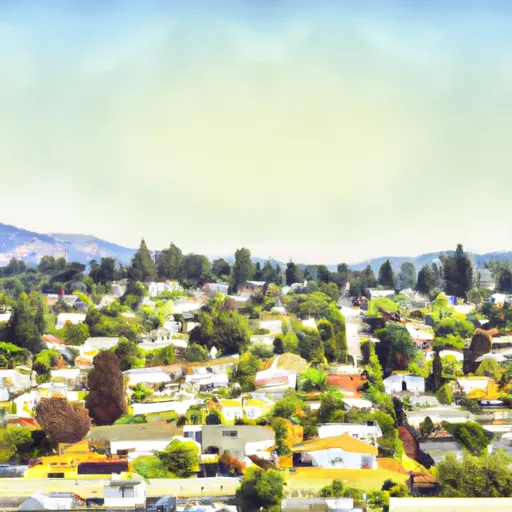-
 Snoflo Premium
Snoflo Premium
Get unlimited access to all our content
With no Ad interruptions! - Start Your Free Trial Login with existing account
Tranquillity
Eden Index
Climate
8.7
•
Recreation
2.2
•
Community
1.3
•
Safeguard
4.6/10

Tranquillity, California is a small rural community located in Fresno County. Known for its peaceful atmosphere, the town experiences a Mediterranean climate with hot, dry summers and mild, wet winters. Summers are characterized by high temperatures, often reaching the mid-90s Fahrenheit, while winters are mild with temperatures rarely dropping below 40 degrees Fahrenheit. Tranquillity receives around 10 inches of rainfall annually, primarily occurring during the winter months.
Hydrologically, Tranquillity is located in the San Joaquin Valley, which is heavily dependent on irrigation due to its semi-arid climate. The area is supported by a network of canals and irrigation ditches, which provide water for agriculture.
Outdoor recreation enthusiasts visiting Tranquillity can explore the various natural beauty spots. The nearby San Joaquin River offers opportunities for fishing and boating, allowing visitors to enjoy the scenic surroundings. Additionally, the region is dotted with vineyards and wineries, providing a chance to experience wine tasting and learn about the winemaking process. Tranquillity is also surrounded by vast agricultural fields, offering the chance to observe and learn about various farming practices. Nature lovers can take pleasure in the local parks and open spaces, enjoying activities such as hiking, birdwatching, and picnicking. Despite its small size, Tranquillity offers a tranquil escape with diverse outdoor recreation opportunities for visitors to enjoy.
What is the Eden Index?
The Snoflo Eden Index serves as a comprehensive rating system for regions, evaluating their desirability through a holistic assessment of climate health, outdoor recreation opportunities, and natural disaster risk, acknowledging the profound impact of these factors on livability and well-being.
Climate Health Indicator (CHI): 8.7
Tranquillity receives approximately
226mm of rain per year,
with humidity levels near 73%
and air temperatures averaging around
17°C.
Tranquillity has a plant hardyness factor of
9, meaning
plants and agriculture in this region tend to thrive here all year round.
By considering the ideal temperature range, reliable water supplies, clean air, and stable seasonal rain or snowpacks, the Climate Health Indicator (CHI) underscores the significance of a healthy climate as the foundation for quality living.
A healthy climate is paramount for ensuring a high quality of life and livability in a region, fostering both physical well-being and environmental harmony. This can be characterized by ideal temperatures, reliable access to water supplies, clean air, and consistent seasonal rain or snowpacks.
Weather Forecast
Streamflow Conditions
Tulare-Buena Vista Lakes
Area Rivers
Tulare-Buena Vista Lakes
Snowpack Depths
Tulare-Buena Vista Lakes
Reservoir Storage Capacity
Tulare-Buena Vista Lakes
Groundwater Levels
Recreational Opportunity Index (ROI): 2.2
The Recreational Opportunity Index (ROI) recognizes the value of outdoor recreational options, such as parks, hiking trails, camping sites, and fishing spots, while acknowledging that climate plays a pivotal role in ensuring the comfort and consistency of these experiences.
Access to outdoor recreational opportunities, encompassing activities such as parks, hiking, camping, and fishing, is crucial for overall well-being, and the climate plays a pivotal role in enabling and enhancing these experiences, ensuring that individuals can engage in nature-based activities comfortably and consistently.
Nearby Ski Areas
Catastrophe Safeguard Index (CSI):
The Catastrophe Safeguard Index (CSI) recognizes that natural disaster risk, encompassing floods, fires, hurricanes, and tornadoes, can drastically affect safety and the overall appeal of an area.
The level of natural disaster risk in a region significantly affects safety and the overall livability, with climate change amplifying these risks by potentially increasing the frequency and intensity of events like floods, fires, hurricanes, and tornadoes, thereby posing substantial challenges to community resilience and well-being.
Community Resilience Indicator (CRI): 1.3
The Community Resilience Indicator (CRI) recognizes that education, healthcare, and socioeconomics are crucial to the well-being of a region. The CRI acknowledges the profound impact of these elements on residents' overall quality of life. By evaluating educational resources, healthcare accessibility, and economic inclusivity, the index captures the essential aspects that contribute to a thriving community, fostering resident satisfaction, equity, and social cohesion.

